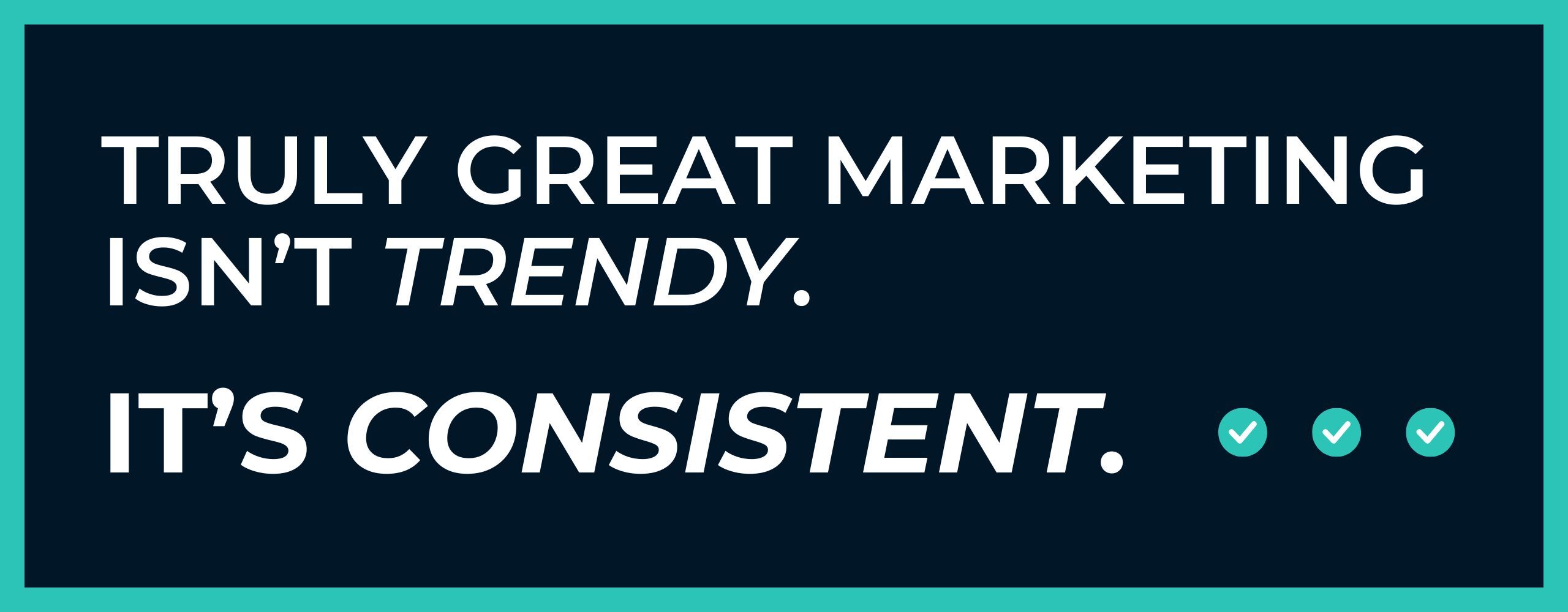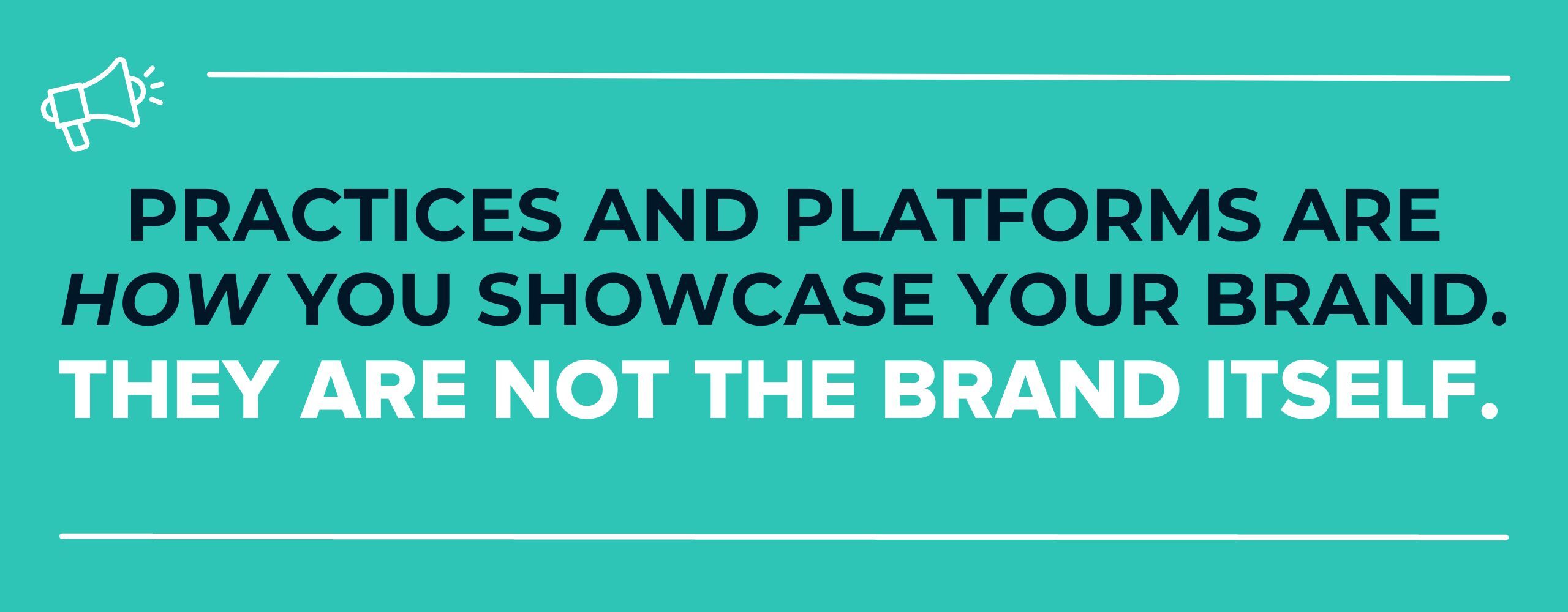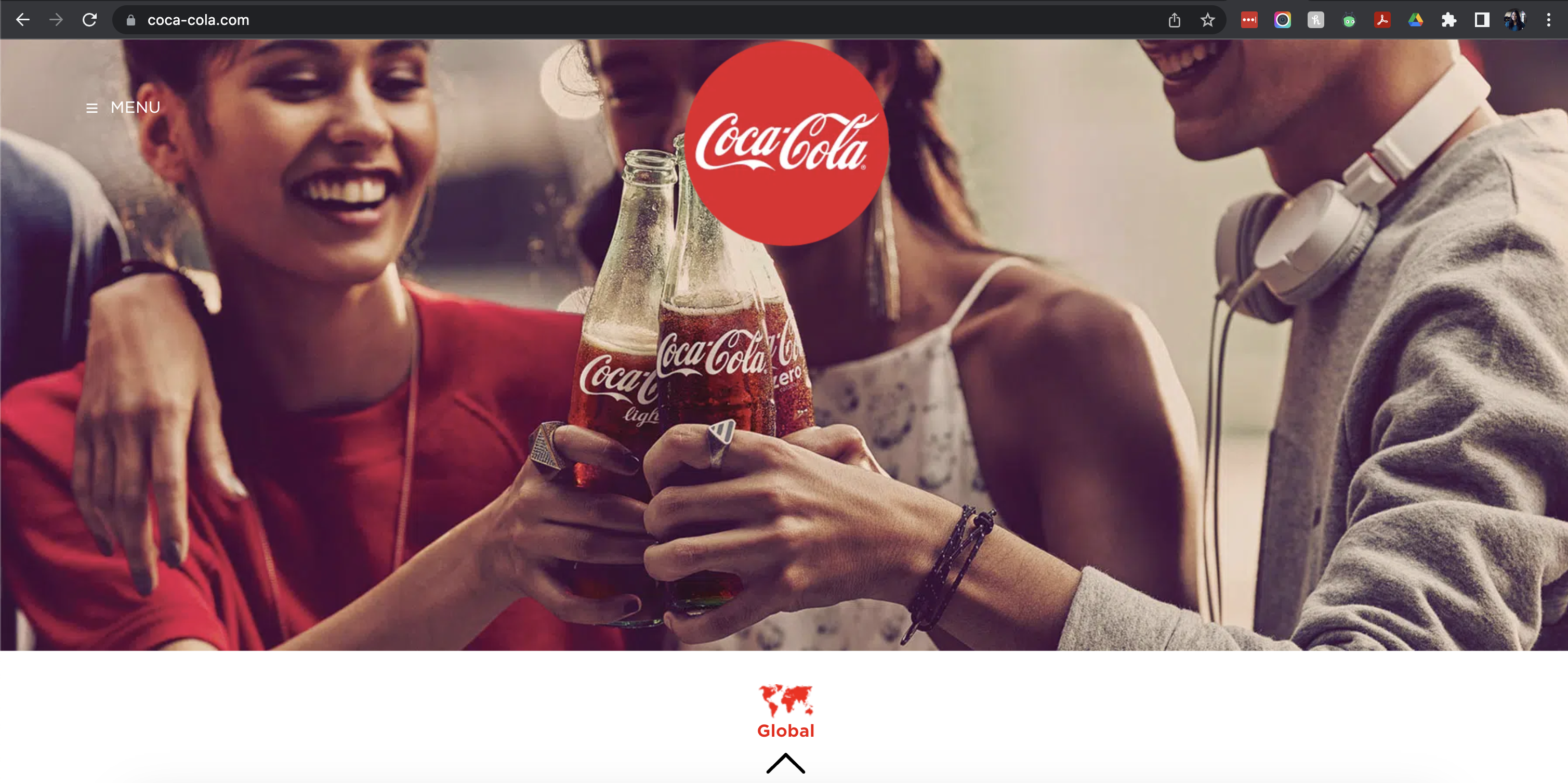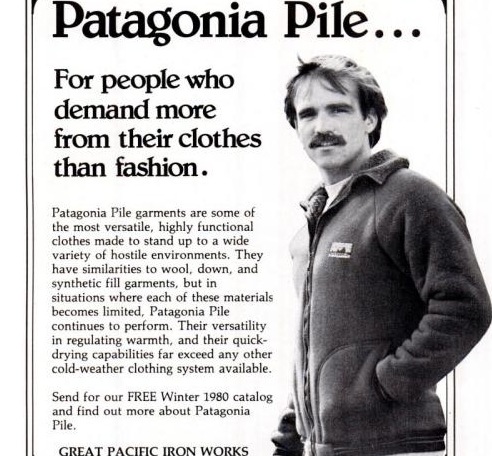Topics:
Content MarketingSubscribe now and get the latest podcast releases delivered straight to your inbox.
Marketing is regularly described as “fast-paced,” and watching new tools and platforms emerge every year, it’s hard to argue.
But when you pause and take a deeper look at each shiny new object, are things really that different? Has what we do really changed that much?
Truthfully, if you’re doing things right, the answer should be no.
As we enter 2023, it’s natural to question what needs to change and what should stay the same in your strategy: what practices should you pick up? What new ideas are worth testing, and which should fall to the wayside?
But, as you do this, I urge you to remember one thing: never chase trends at the expense of your brand.
Truly great marketing isn’t trendy. It’s consistent. It’s true to your brand, or business's identity — its values, principles, messaging, and standards.
Yes, the mediums, practices, and behaviors we employ may change dramatically, but if you want to build trust (which you should) and maintain your audience long term, your brand shouldn’t.

This is the difference between authentic businesses that people stay loyal to and ones that churn customers quicker than they close them.
Here are some things to keep in mind as your brand considers new practices and trends in the new year.
Practices do not define your brand
Your ‘brand’ is what you look, sound, and feel like; what values you want to portray and sentiments you want to instill in your audience. It’s your identity as a business.
For more traditional marketers, brand is often closely tied to “The Four Ps” — price, product, place, and promotion, but these certainly aren’t the only important pieces.
Today, your brand is ultimately the impression you want to leave on potential buyers, what you want them to feel when they think of you or encounter one of your social media posts, webpages, or videos.
Your brand may include values like inclusion and transparency, or education and trust.
But note that brands are not actions. They are not specific tasks or behaviors. And this is where many marketers get tripped up.
Your brand is not your behaviors or practices. Practices look different over time, however brands rarely change.

You can and should try new things. Experiment with practices and platforms to showcase your brand to potential buyers, but don't chase trends and abandon your core brand.
A great real-world example of a brand adapting itself to different platforms and practices can be seen in Coca-Cola.
One of the themes the beverage giant has highlighted in its marketing for decades is togetherness.
It was apparent in its “Hilltop” commercial in 1971 with people from all different backgrounds singing in harmony:
Today, more than 50 years later, their website featuers a group hugging and cheers-ing over bottles of Coke:

And even their Instagram account includes colorful calls to action:
While each approach may appeal to different audiences and capitalize on different trends and mediums, they remain "on brand."
All of the materials stand by the message of togetherness, and anyone could come across them and recognize the Coke brand they know and love.
The brand wasn't tossed aside simply to try a new medium.
As a business, it's essential to stay true to your brand as times and practices evolve, just like Coke has. Abandoning them to chase a passing trend can run the risk of confusing or even alienating your audience, and those are just some of the dangers.
Why you need to prioritize brand consistency over passing trends
Like your visual brand (colors, fonts, etc.), your brand values and messaging should be consistent across everything you do.
But why exactly?
Well, according to Lucidpress, consistent presentation of a brand can increase revenue by 33%. It helps buyers and audience members recognize and remember you. A consistent brand:
- Attracts the right customers
- Keeps customers loyal
- Maintains a uniform experience
- Sets expectations
- Builds trust
Attract the right customers
Brand consistency helps ensure you’re attracting the right people to your business.
When you know what you want to communicate and don’t stray from that, you minimize the risk of sending mixed messages to your audience, not only confusing people, but attracting the wrong people and scaring off the right ones.
Keep your customers loyal
Once you’ve attracted the right audience, being consistent with what you stand for keeps them around so you can firmly establish a relationship with your ideal customers around principles and values.
77% of consumers buy from brands that share the same values as they do. Just look at Patagonia fans, for example.
They stick around, despite a premium price tag, because they trust Patagonia to deliver quality and stick to its core values of protecting the wilderness and the people who love it.
(Something they’ve maintained since their launch in 1973.)

 Patagonia print ads, 1980
Patagonia print ads, 1980
 Patagonia print ad, 1998
Patagonia print ad, 1998
Patagonia commercial, 2022
Fans who are drawn to these values are willing to pay more in order to support a brand they know will stay true to them rather than investing in a brand that may let them down.
That loyalty is something you can't buy.
Maintain a consistent customer experience
Brand consistency also helps create a consistent customer experience.
Whether it’s your website, social media, blog, a print ad, a commercial, a YouTube video, or even product packaging, each piece of your marketing should feel like it belongs with the other.
This is especially important with online transactions and conversions. Consistency between touchpoints reinforces expectations and helps the user know they’re in the right place.
For example, say you came across a post on Instagram for a meal tracking app.
You’re intrigued and click the link provided to download it. However, when you get to a landing page, the headline now says it’s a fitness app that includes a side feature of meal tracking.
You’re confused. That's not what you were sold on. You understandably may not know what you’re actually getting and be reluctant to fill out any form to find out. So, you leave.
Confusion is the biggest enemy of conversion and by maintaining a consistent message and experience across all of your touchpoints, you can dramatically decrease the risk of losing a lead or customer to it.
Set expectations
A consistent experience also helps set realistic expectations with your buyers.
When someone sees a consistent message or value showcased across all of your different materials, it gets reinforced in their minds.
They are more likely to believe what you claim because you are repeating it. This consistency makes prospects feel like they know what to expect from you in the future.
They can trust that you’ll stick to what you’ve already promised; you’re predictable. Predictability in this way is welcomed, because ultimately, it builds trust.
Build trust
People don’t want to do business with brands they don’t trust. They want to know that they will get their money’s worth and that you’ll deliver on what you promise and do right by them.
In fact, according to a survey, 46% of consumers in the US say that they would pay more to purchase from brands they trust.
When your brand is consistent in the principles it preaches, the experiences it creates, and the messages it communicates, buyers don’t have to question whether or not you mean what you say, or if they can rely on you to stand by your claims.
They know what you’re about. They know your brand and can trust you to maintain it.
Don’t abandon your brand — adapt it
All of this said, don’t be afraid to explore new trends. Don't be afraid to write that LinkedIn post or create that Instagram Reel — just make sure you bring your brand along for the ride.
One of the biggest challenges of marketing is saying the same thing in a variety of ways.
We regularly repackage and repurpose our content to appeal to different audiences and match different situations, and adapting to new platforms and mediums should work the same way.
You know your brand — its tone, voice, values, and principles.
Before you dive into any trend this year, look at what it has to offer and how you can authentically adapt your brand to it.
Don’t simply hop on a trend because it’s getting attention. Carefully consider how you can use it to bring value to your audience and stay true to the brand you’ve created. Doing otherwise can only hurt your business long-term, rather than helping it.


Order Your Copy of Marcus Sheridan's New Book — Endless Customers!

